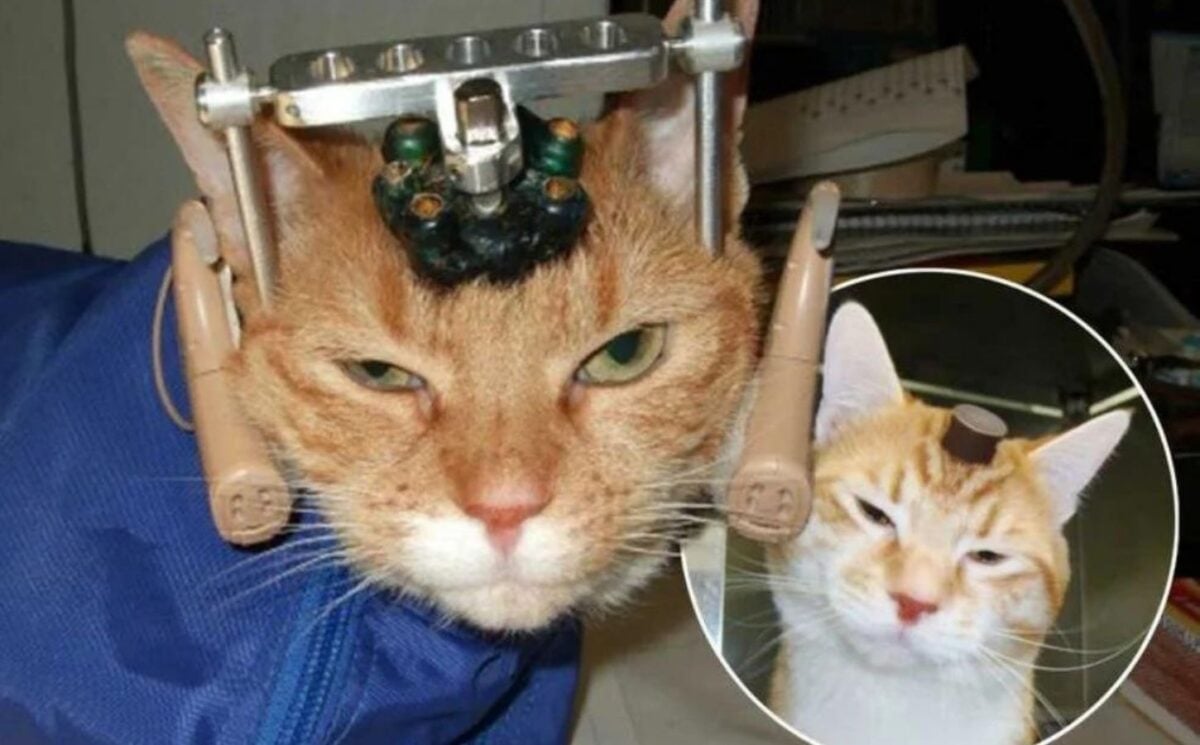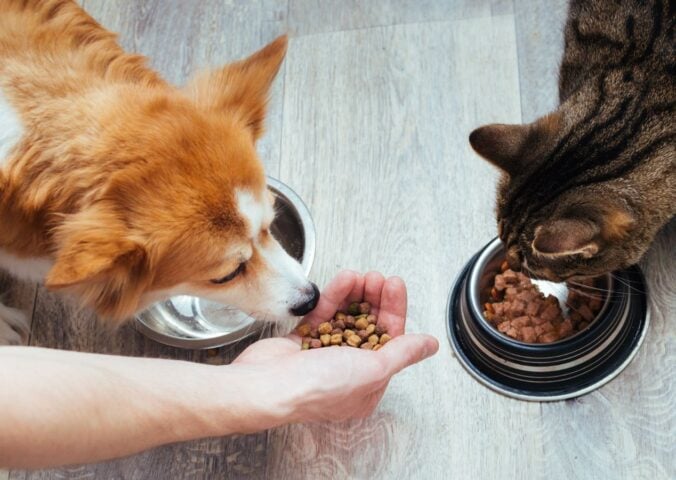When I was a teenage animal rights activist in the 1980s, vivisection was the issue.
We kicked up a fuss about meat, fur and hunting, but the issue that really got our blood pumping was the plight of laboratory animals. It was right at the top of the animal rights agenda and I could see why. Pictures of masked scientists torturing monkeys, rabbits and mice burned into my mind and filled me with more rage than I’d ever felt before.
The horror of vivisection
I remember the long, hot summer holidays when me and my friends ordered piles and piles of leaflets from the British Union for the Abolition of Vivisection. We’d hand them out on the high street, plaster them over walls and ask shopkeepers to put them up in their window.
One of these leaflets will haunt me forever. It featured a terrified cat with her head covered in electrodes, and the slogan: Curiosity Will Kill This Cat. I wanted to reach out and save that poor cat. Give her a cuddle.
We collected signatures on petitions calling for the end to all animal experiments. We never distinguished between tests that were made for drugs or cosmetics – we wanted it all to stop.
My local MP was David Mellor, who was then the Home Office minister responsible for animal experiments. One night the Animal Liberation Front covered his house in red paint. I’d heard of the ALF before and was so excited when I found out these anonymous heroes had been in my neighbourhood.
I was so young. I assumed our voices would be quickly heard and agreed with. It was only a matter of time, I thought.
So if you could tell the teenage Chas that vivisection is still happening now in 2019, I think he’d be even angrier. If you told him that these days even vegans rarely mention it any more, he’d be horrified.
Shrouded in secrecy
The vivisection racket is shrouded in secrecy and that makes it hard to know the true extent of the cruelty. Some experts have estimated that more than 115 million animals are used worldwide each year. Recent Home Office figures reveal at least 3.79 million per year in the UK.
The industry is not only secretive but also sneaky. For instance, in the US, the Animal Welfare Act is often cited by vivisectionists as an example of how heavily it is regulated. This is supposed to reassure concerned consumers. But what they don’t tell you is the Act excludes mice and rats from the definition of ‘animal’ – and mice and rats are the majority of animals used in US lab research.
Rabbits are also targeted and they suffer appalling treatment. Some of these poor creatures get restrained while chemicals are poured into their eyes. Then they are left for weeks of agony.
The more you read about what happens, the more you realize there’s urgent work to do. Animals are being injected in their brains and faces, dipped in hot water, subjected to electric shocks, and so much more. Some have clamps put on sensitive areas of their bodies to create chronic pain.
Pregnant sheep and their unborn lambs get surgically mutilated, partially suffocated and then killed. Rats and mice are poisoned with chemicals to give them cancer.
Unbearable ordeals
One experiment involves wrenching baby monkeys from their mothers, locking them up in tiny cages, and imprisoning them there for life. The separation is brutal: it often takes two lab workers to hold the struggling mother down as her babies are taken away.
The babies are mentally destroyed. For the rest of their lives, no amount of company, stroking or interaction can get them to even lift their heads. And what do the scientists ‘learn’ from these repeated studies? That if you drag a baby from its mother and confine it in a claustrophobically tiny cage, it gets mentally distressed.
Ahead of the Iraq war, medics sought to find out what happens to a wounded creature who receives further wounds. To do this, they attacked pigs. One of the medics explained: “My pig? They shot him in the face with a 9-millimeter pistol, and then six times with an AK-47 and then twice with a 12-gauge shotgun. And then he was set on fire.”
Finally, after a 15-hour ordeal, the pig died.
Animals are tortured
Just last week it was revealed that the UK government has also been poisoning animals at the Porton Down laboratory. This time it was guinea pigs that were left writhing, gasping and shaking after they were exposed to a nerve agent. It took some of them days to die.
Some 4,000 animals are experimented on each year at the government’s weapons-research laboratory – animals tortured and killed so our leaders can learn the best ways to torture and kill humans.
Vivisection is barbaric, outdated and repeatedly proven to be misguided. Tobacco giants used tests on dogs to ‘prove’ smoking doesn’t cause cancer. Thalidomide passed years of animal tests before being released for human use. The research not only hurts animals, it hurts humans too.
Arthritis painkiller Rofecoxib was withdrawn in 2004 even though it had previously been passed as ‘safe’ when tested on animals. Later it was revealed that information about the risks to humans had been withheld from doctors and patients for over five years, resulting in between 88,000 and 140,000 cases of serious heart disease
There are modern scientific alternatives that are cheaper, faster and more accurate than animal experimentation, including human-based micro-dosing, in vitro technology, human-patient simulators, and sophisticated computer modelling.
More noise
So why aren’t we making more noise about vivisection? I wonder if this cause has simply fallen out of fashion – it doesn’t fit with how veganism is talked about and promoted these days. There’s a lot of focus on what we eat and what vegan treats we recommend. We often connect by sharing vegan recipes online. We jump for joy when restaurants offer vegan menus and local cafes offer vegan cupcakes.
But what about the victims of vivisectionists? They’re still being tortured and killed. We stand up for their cousins who are slaughtered for flesh, so shouldn’t we stand up for the laboratory animals too? All animals matter.
One option is to support groups like Animal Justice Project, Animal Aid, and Unoffensive Animal – great organizations that continue to bang the drum for laboratory animals. The more of us bang together, the more effective we’ll be.
Every eight seconds, an animal dies in a British lab. Vivisection is still an issue.






